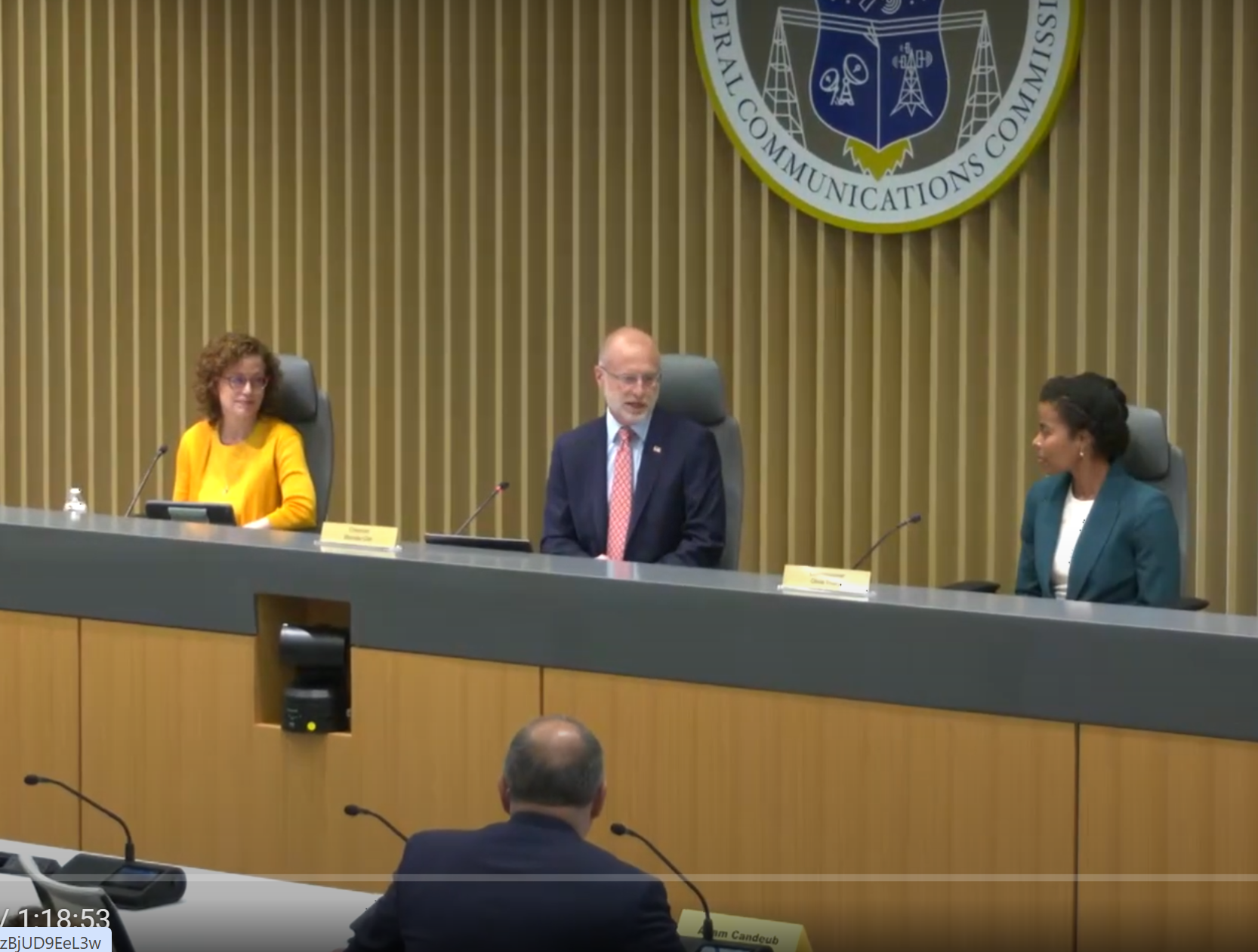Taking it to the Streets
Chicago broadcasters get up close and personal with viewers
CHICAGO
Stations spend no end of effort and money trying to connect with their audience. Consultants do studies, anchors make appearances, promos are produced and billboards go up. And if what Chicago is seeing happen, street-side studios may be the next arrow in the connect-with-the-audience quiver.
All the network morning talkshows, with their softer content, use street-side studios. But to have a hand-waving downtown crowd as the background for a local affiliate, hard-news show has been slow in coming.
"For local broadcasters, it is an attempt to develop a strong sense of community and connect with viewers," said Jerry Gumbert of TV news consultant company Audience Research and Development. "It's a solid concept because most people still want to be on TV."
There's that old saying that the three most important factors for a successful retail store are location, location, location. Gumbert said the same goes for a street-side studio. "Location is everything, and unfortunately many stations in America are located off the beaten path or in unsafe neighborhoods."
WLS, the ABC O&O in Chicago recently announced plans to build a new street-level studio; WBBM, the Chicago CBS O&O also plans to build a new facility that will include news and weather facilities that will be visible to the street.
A year and a half ago, NBC O&O WMAQ deployed its street-side studio in downtown Chicago. In the location game, the station seems to have hit the ball out of the park. "I say without question we have the best location in town" said Frank Whittaker, vice president of news for WMAQ.
"If you went around Chicago and said 'what is the best location to put a street-side studio, what backdrop do you want that says Chicago?'" Whittaker asked. "You would pick where we're at. We have the Wrigley Building in the background, the Michigan Avenue Bridge... It is downtown Chicago, right on Michigan Avenue. I don't think you can beat it."
To get that view, however, the station had to venture a block away from its home in the NBC Tower to the nearby Equitable Building. It offered two walls of floor-to-ceiling glass and a large plaza outside. WMAQ's studio control room remains back in the NBC Tower, which is where the program is switched and where the robotic cameras are controlled.
"[We] had long cable pulls underneath the street to Michigan Avenue that come up through the building," said Jan Jaros, director of broadcast operations and engineering. In addition to the news talent at the street-side studio, it is staffed with a prompter operator, a stage manager, a handheld operator for outside and beauty shots, as well as a stagehand for lighting.
"Lighting was a major challenge given the outside views," said Jaros. There is gelled, bulletproof glass to shoot through and ever-changing lighting conditions outside. "From 5 a.m. in the black of midwinter to 6 p.m. with the bright west sun in midsummer, you have the full gamut of lighting issues.
"We have been combining lights with several different gel strengths with shades that one stagehand could manipulate during a commercial break to try and get the correct look on-air for all kinds of weather and daylight issues." The weatherman does the forecast from outside on the plaza, where the robotic cameras and the handheld cameras can follow him.
PRACTICING DISCRETION
Whittaker pointed out that there are more than just technical considerations when doing a newscast from a street-side studio. "There will be times when we're doing a very serious story, and if you had people waving in the background, it could be distracting. We have shots we can take that don't show the plaza right behind us."
The anchors take the two-minute walk outside from NBC Tower over to the Equitable Building in good weather, and they can take a slightly longer tunnel route when it's inclement.
"[The Equitable] Building has its own security, and we have our own security as well out there," said Whittaker. "It's mainly outside just to protect the camera and to make sure if we're outside with the weathercaster doing weather, somebody's coming up behind them, the security person's there to get that person out of the way or keep them from getting into the background."
Even with the FCC indecency crackdowns, the station doesn't use a delay system. "There are some barriers so people can't get too close to the window," he said, and if we saw something was developing or something was happening that we didn't want to put on the air, there are plenty of other camera shots that we could take where you don't see that going on."
The ratings would suggest WMAQ's street-side gamble was worth it. "We saw a spike in the ratings in the morning, and then in the afternoon we started doing our afternoon 4:30 and 5 o'clock news out there last November... we noticed an increase in the ratings then too.
"We think, right now, it's a differentiator for us," Whittaker said. "It's a way to connect to our viewers that others can't. Obviously our competitors must agree."
The professional video industry's #1 source for news, trends and product and tech information. Sign up below.
